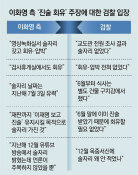Samsung opens paths for commercialization of light-emitting QLEDs
Samsung opens paths for commercialization of light-emitting QLEDs
Posted November. 29, 2019 07:29,
Updated November. 29, 2019 15:00
Samsung Electronics announced on Thursday that the company has proved the commercialization feasibility of quantum dot light-emitting diodes (QLEDs) that overcomes the limits of quantum dot (QD) materials.
According to the electronics giant, the quantum efficiency of self-emitting QLEDs increased by 21.4% and the QLED lifetime extended to one million hours – the highest level in the industry – with the improved structure of QDs. The relevant study was published by Nature, the globally-renowned science journal.
Researchers at Samsung Electronics replaced long-chain ligand molecules, which prevent the aggregation of the QD particles, at the QD surface with short-chain ones to absorb electric current faster. This played a critical role in improving the quantum efficiency of QLEDs.
“Self-emitting QLEDs can display pure and clear light in the entire range of visible rays,” said a source from Samsung Electronics. “As it emits light and color itself, there is no need for a backlight and color filter. A thin and flexible display can be produced using the technology as well.”
The South Korean company has been criticized by its competitors in the TV and display sectors for QLEDs’ lack of ability to emit light. “If Samsung successfully commercializes self-emitting QLEDs with their proven efficiency, one could say that the company defends well against the criticism of LG Electronics and other competitors,” said an industry source.
“Thanks to Samsung’s distinctive core material technology, we were able to work towards exploring the potentials of next-generation displays,” said Dr. Jang Eun-joo, a Samsung Fellow at the Samsung Advanced Institute of Technology and a corresponding author of the paper. “Going forward, we are looking to expand the range of development of eco-friendly displays by adopting Quantum Dots in new structures.”
Keun-Hyung Yoo noel@donga.com







